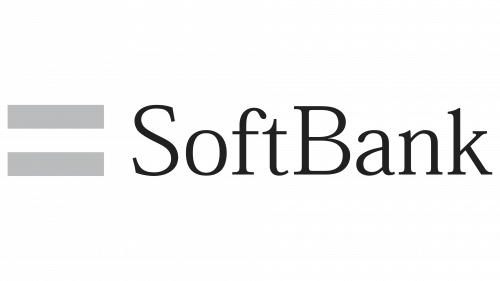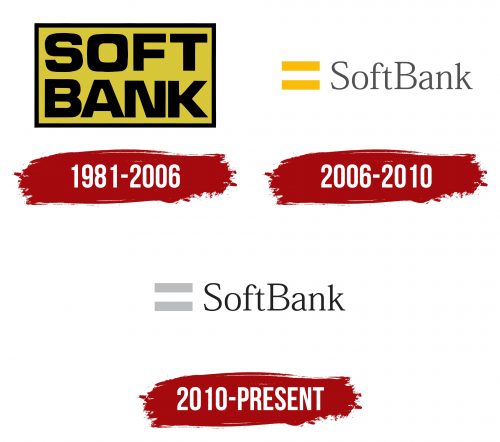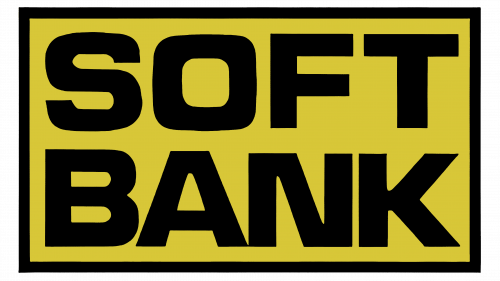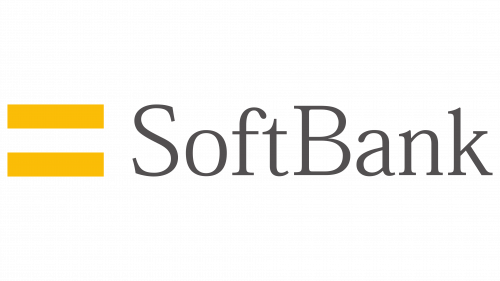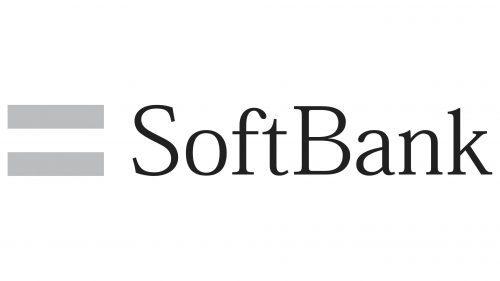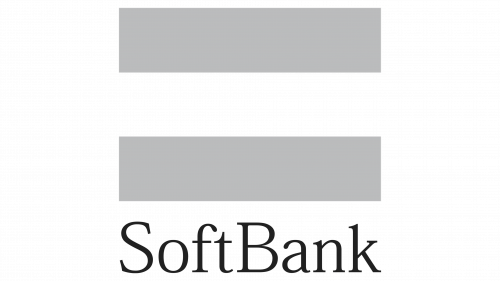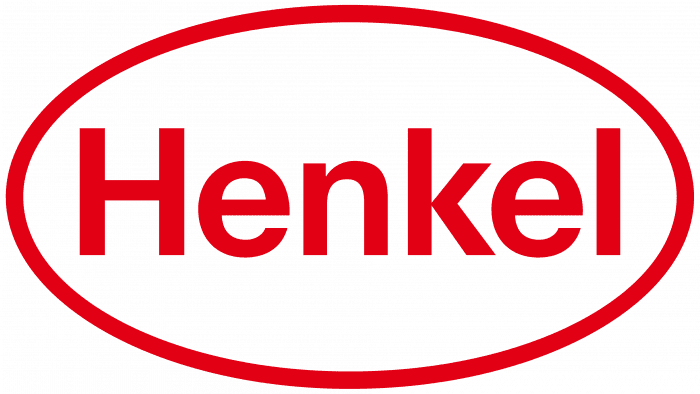The SoftBank logo embodies an era that began in the last century and became modern through minimalist design. The simple emblem conveys the complex concept of the Japanese holding company, which is focused on the successful development of advanced technologies.
SoftBank: Brand overview
When Masayoshi Son, a young businessman from Tokyo, Japan, created SoftBank in the fall of 1981, the company’s history officially began. At first, it was known as Sofutobanku Kabushikigaisha or SOFTBANK Corp. In Japan, the business concentrated on software distribution.
Born in Japan to Korean immigrants, Masayoshi Son showed an early interest in business and technology. He studied economics and computer science at the University of California, Berkeley, where he acquired his education in the United States. After returning to Japan, Son saw an opportunity in the quickly expanding computer industry and launched his own business.
The company later collaborated with several publishers and developers to distribute software. The business soon established a solid reputation as a trustworthy provider, which helped it grow its clientele and solidify its place in the Japanese market.
In 1990, the firm launched “Oh! PC,” a magazine devoted to personal computers, marking the company’s first notable step toward corporate diversification. This magazine gained popularity among computer enthusiasts and contributed to establishing the brand as a leading provider of cutting-edge technology.
1994 was a pivotal year for SoftBank. For $2.1 billion, the business purchased a majority interest in Ziff-Davis, a significant computer magazine publisher in the United States. This acquisition showed Masayoshi Son’s desire to turn his company into a worldwide technology firm, greatly increasing its market share abroad.
The firm invested in Yahoo! in 1995, paying $2 million for a 37% share in the business. As Yahoo!’s stock value increased in the ensuing years, this investment became incredibly profitable. The accomplishment of this investment enhanced Masayoshi Son’s standing as a forward-thinking financier in the technology industry.
Yahoo! Japan was a joint venture established in 1996 by Yahoo! and SoftBank. This company, which is now one of the company’s most profitable ventures, rose fast to become the top internet gateway in Japan.
The firm frequently invested in online businesses during the late 1990s and early 2000s, including Alibaba, E*Trade, and numerous others. Masayoshi Son’s approach was to make early-stage investments in promising tech startups.
With the introduction of Yahoo! BB, a broadband internet service that immediately gained popularity because of its affordable costs and fast connections, the company entered the Japanese telecom industry in 2001.
In 2006, the firm completed the biggest acquisition in the telecom industry at the time, paying $15.1 billion to acquire Vodafone’s Japanese business. With this transaction, the company became one of the biggest mobile operators in Japan right away.
As the exclusive distributor of the iPhone in Japan, the company dramatically increased its market share in mobile communications in 2010 and grew its prominence in the smartphone industry.
In 2013, the firm purchased a majority interest in American cellphone carrier Sprint for $21.6 billion. At the time, this transaction represented the biggest foreign acquisition made by a Japanese business and demonstrated the company’s aspirations for worldwide growth.
2016, the company purchased British microprocessor technology pioneer ARM Holdings for $32 billion. This transaction aimed to improve the company’s standing in the artificial intelligence (AI) and Internet of Things (IoT) domains.
With $93 billion in resources, the firm established the Vision Fund in 2017, making it the largest technology investment fund globally. The fund specializes in funding robotics, IoT, and artificial intelligence firms.
The company maintained its active investment approach in 2018 with the launch of its Vision Fund. The business made large investments in several technological firms, investing $2.25 billion in GM Cruise, an automotive company. Furthermore, the company successfully executed its initial public offering (IPO) of its telecoms company, SoftBank Corp., on the Tokyo Stock Exchange, making it one of the biggest IPOs in Japanese history.
The firm announced the opening of Vision Vehicle 2, its second investment vehicle, with a $108 billion stated size, in 2019. This fund specializes in making investments in artificial intelligence-related businesses. The company also revealed plans to combine Sprint and T-Mobile US in the same year.
The company encountered severe financial troubles in 2020 due to its failed investments in several businesses, including WeWork. In response, the business revealed a significant $41 billion asset sale scheme to strengthen its balance sheet and buy back shares.
The firm had a year of recovery in 2021. The company’s $46 billion record yearly profit was mostly attributable to the profitable IPOs and investments made in businesses that were part of the Vision Fund portfolio. The merger of Sprint and T-Mobile US was finalized in that same year.
In 2022, the business continued to adjust to shifting market circumstances. The corporation declared its intention to adopt a more cautious approach to investing, emphasizing the support of its current portfolio companies. Additionally, as part of its plan to improve its financial condition, the company sold a portion of its ownership in Alibaba Group.
The firm concentrated on developing artificial intelligence technology in 2023. Seeing the importance of artificial intelligence (AI) to the technology industry’s future, the corporation boosted its investments in this field through Vision Fund 2 and its other subsidiaries.
Meaning and History
What is SoftBank?
It is a Japanese multinational conglomerate holding company known for its technology, telecommunications, and finance investments. Founded by Masayoshi Son, it operates a range of businesses, including mobile telecommunications, internet services, and e-commerce. The company is perhaps best known for its Vision Fund, one of the world’s largest technology-focused venture capital funds, which invests in high-growth technology companies worldwide. The brand’s portfolio includes stakes in companies such as Alibaba, Arm Holdings, Sprint (now part of T-Mobile US), and various startups in artificial intelligence, robotics, and renewable energy sectors.
1981 – 2006
The SoftBank emblem is simple, unpretentious, but highly readable. This focus was chosen by the founders of the holding company, as a new face in the specialized market needs to be memorable to most clients. As a result, designers proposed a version with a prominent name to maintain optimal informativeness. At first glance, the logo gives a clear understanding of the organization and makes its name easy to remember.
Thus, the emblem consists of a single element – a wordmark placed inside a horizontal rectangle. Despite the lack of creativity in its visual identity, the company conveys the most important message to consumers: a business approach, strictness, responsibility, and safety. These principles are characteristic not only of the identity but also of the holding itself. Symbolism and other allegories are foreign to the founders, as their work is based on clear thinking, a well-thought-out strategy, and a practical approach. Consequently, there is nothing metaphorical in the logo.
The emblem features two-tiered text in large, monoblock-style letters. They are so large that they occupy the entire inner space, leaving no room for other elements, which aligns well with the company’s business approach. At the same time, this structure does not turn the logo into a “block of stone”; it effectively emphasizes safety and even introduces some visual rhythm, as the position of each upper glyph corresponds to the lower one. The lines are aligned on both sides.
The predominant letter configuration is square. That is, the letters have a square shape, including the “O,” which is typically round. However, the designers made it square by rounding the corners, thus creating an original glyph. As a result, the geometric symbols fit harmoniously within the rectangle, matching perfectly with the neat, thin frame.
The SoftBank logo’s color scheme includes black and yellow. This combination is unobtrusive because it is natural. These colors are typically seen in hardworking bees, suggesting a hardworking investor helping firms enter markets to make profits and increase them. This attractive palette is often used in various signs and notices for emergency attention.
2006 – 2010
The emblem received an entirely new design—simpler and more minimalist. However, a reference to the original version is still visible, though the style of Kaientai banners now dominates. The concept dictates this choice, as the prototype belongs to a trading and naval company that was not afraid of turbulent waters and confidently “sailed” toward desired goals from the start. It played a significant role in transforming Japan into today’s country. Thus, the SoftBank emblem embodies an allegory of determination, tireless effort, and persistent development despite obstacles.
Instead of a bulky rectangle, an equal sign “=” is used. Typically, it precedes the correct answer in any mathematical equation. Consequently, the SoftBank logo suggests that the holding company has the solution (answer) to the problems of those who seek its help. It also symbolizes interactive communication and equal footing with clients—based on mutual respect and adherence to requirements.
The yellow color remains and now highlights the mathematical equal sign, continuing to draw attention, foster business cooperation, identify problems, and help diligently resolve them. The inscriptions, on the other hand, have changed dramatically. They are now extra-thin, elegant, and light. The refined serif font inspires trust and hints at simple solutions. This is the Japanese Mincho font, emphasizing the company’s authenticity.
Although the name SoftBank is placed in a single line, it takes up little space as the two words are now written together, with each word starting with an uppercase glyph. The letters appear airy than the adjacent massive “=” symbol. The gray color, which replaces black, adds to their lightness.
2010 – today
The changes made were quite minor, as the holding company only altered the color of the equal sign “=.” The broad yellow stripes were changed to gray. Designers named it “shining silver” due to its ability to gleam regardless of surrounding shades and background. It essentially became a precursor to the “information revolution” initiated by the Japanese organization SoftBank. With this change, the pair of parallel lines turned into a timeless value.
The light font suggests simple answers for those seeking solutions to problems and elevates the company’s image. The elegant glyphs feature tiny serifs that harmonize with the thin strokes. The capital “S,” “B,” and lowercase “f” and “k” are the same height as the equal sign, creating a sense of meticulousness and attention to detail. This approach characterizes the holding company as an experienced, professional, and rigorous representative of the investment sector.
